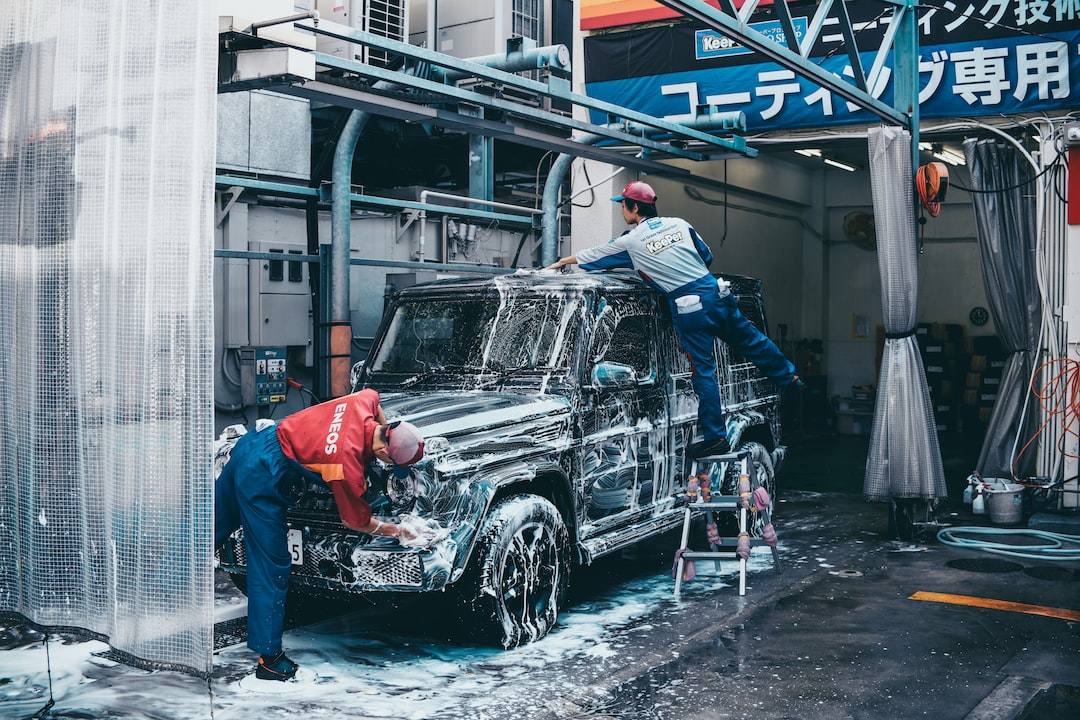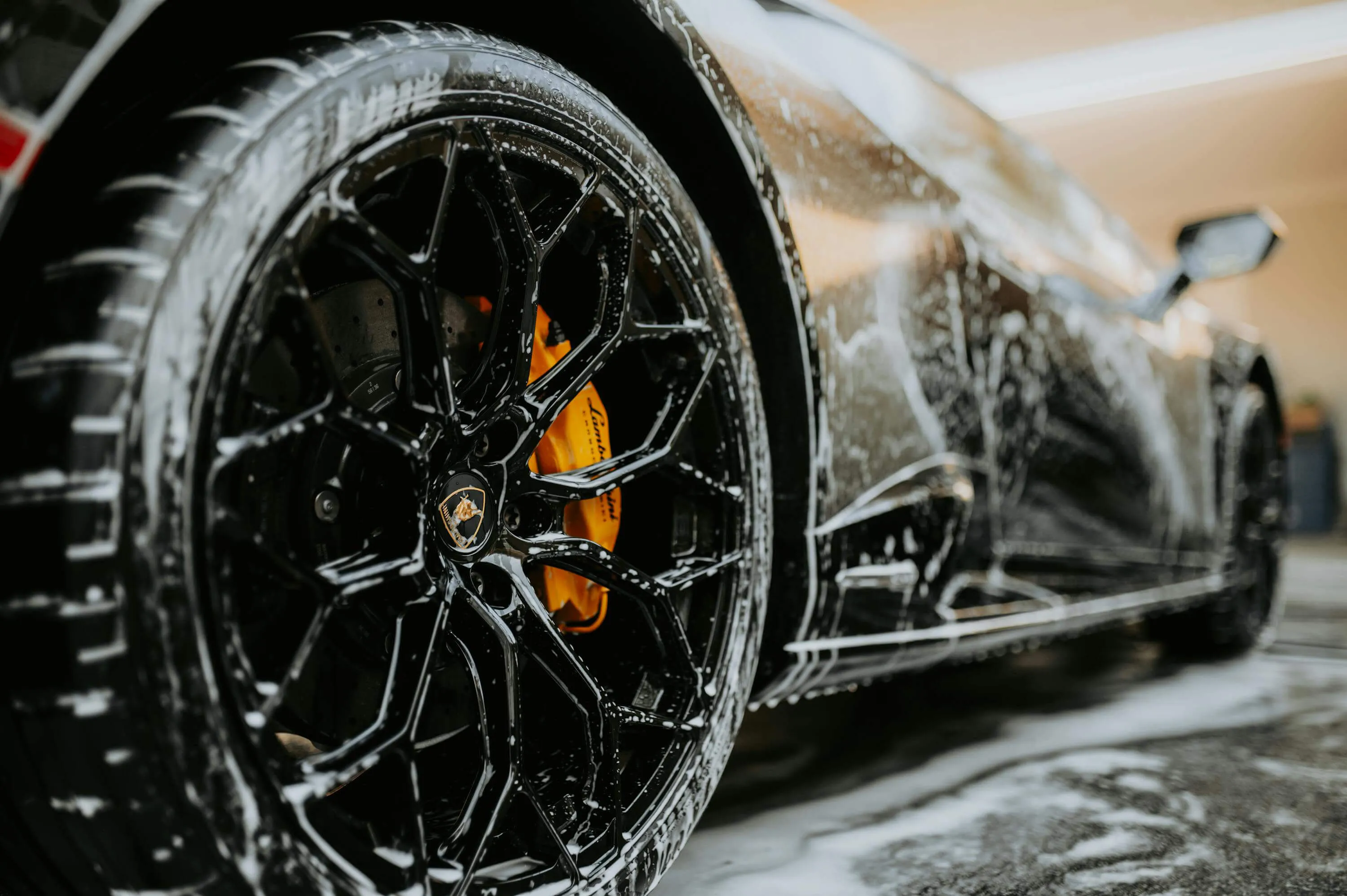The APF Newsletter
Car Wash Safety: Regulations, Best Practices, and Considerations
Ensure car wash safety with this comprehensive guide. Learn about regulations, common risks, and best practices for employee and customer safety.

While car washes are relatively safe environments, there are still plenty of risks because of the combination of electricity, water, and vehicles. The safety risks range from a simple slip and fall to complex entrapment situations involving conveyor systems and roller brushes at automatic car washes. There are a number of potential issues that car washes must address to create a safe environment for workers and customers alike.
Understanding Car Wash Safety Regulations
Car wash safety should focus primarily on employees because they’re the ones at the most risk. Customers come and go, but each employee will spend between four and eight hours per day exposed to chemicals, electrical shock hazards, and slip risks. The Occupational Safety and Health Administration (OSHA) has regulations relating to the car wash environment, including protection from customer vehicles. OSHA’s inspectors are aware you can’t eliminate all risks related to water or electricity, so the key is hazard communication. Making your workers aware of specific risks with signage, training modules, and verbal reminders is essential both to protecting them and proving you weren’t negligent in creating a safe working environment.
The Environmental Protection Agency (EPA) also regulates safety factors involving the local environment. If discharging rinse water incorrectly could affect nearby waterways and plant life, you could end up with a fine from the EPA. In addition to federal environmental regulations, you should also check up on any state and local level regulations that might apply.
4 Common Car Wash Risks
Basic car wash maintenance goes a long way in reducing safety risks, but some hazards remain even at the best-run location.
Vehicle-Related Accidents
Moving vehicles create the greatest safety risk at a car wash to customers and workers alike. Even vehicles that aren't running may end up moving due to gravity or a conveyor system. Pavement markings and signs directing customer traffic limit the risk factors to certain areas so your workers aren’t dodging vehicles everywhere they go.
If your employees drive customer cars as part of the washing or detailing process, you’ll need a separate set of safety regulations for them. Outline the entire process you want the drivers to follow to prevent collisions and other accidents, from checking all mirrors to securing vehicle keys in a central location rather than leaving them in the vehicle.
Equipment Hazards
Your car wash rules for employees should aim to keep them safe from electrical hazards, equipment crushing or shearing risks, and even repetitive strain or lifting injuries. Protocols that call for staying away from pinch points or moving equipment aren’t enough. You may need machine guarding additions that keep workers from accessing certain risky areas unless the equipment is powered down and unable to move. Don’t forget about addressing the hazards of secondary equipment used for everyday work, such as the ladders needed for accessing high chemical tanks or raised brushes.
Slips, Trips, and Falls
A car wash is a naturally wet environment, and it’s simply impossible to keep it dry in many cases. While adding to drainage and using raised textured surfaces reduce the risks, clear hazard communication is essential in wet areas. Workers and customers need to know where to walk carefully and slowly, especially if chemicals are adding to the slippery effects.
Chemical Hazards
Car wash chemicals are needed for almost every step of the wash process, in addition to being used for cleaning the equipment and to prep your car wash for winter. That means even a small business could have over a dozen different chemicals on hand at any given time. These chemicals not only have individual risks but may cause other hazards if mixed. Personal protection equipment (PPE) like gloves, respirators, and eye protection are essential for protecting your workers, while proper use and storage reduce the risks to your customers.
Car Wash Safety Checklist
Employee Safety
- Use extensive and clear signage throughout the facility to remind employees of risks from slippery surfaces, moving equipment, chemicals, and electrical equipment.
- Consider the use of technology to ensure safety compliance, such as sensors that stop equipment from moving if someone is detected in its path and video surveillance to verify safety practices.
- Set aside time for paid wash industry-specific training to keep all employees up-to-date on safety protocols and the risks they’re facing every day.
- Require hazard checks throughout the work day to clear up spilled wash chemicals, put away hoses and cords, and otherwise improve the safety of the workplace.
Customer Safety
- Post all self service car wash rules in multiple locations so they can’t be missed.
- Post and enforce speed restrictions for wash safety.
- Set up automatic wash warning lights and buzzers to make sure customers can tell when they should stop and go.
- Maintain good lines of sight when customers are entering and exiting enclosed areas so they can avoid collisions with other vehicles and pedestrians.
Mechanical Safety
- Lock out or block out any machinery in need of repair, cleaning, or maintenance. Make sure workers can’t override the lockout procedure.
- Check the condition of the equipment before each day starts for signs of damage, wear, or malfunction.
- Inspect all electrical cords and wiring, looking for cracked, cut, or missing insulation.
- Verify that all equipment used in wet areas is designed to withstand moisture exposure without creating a shock risk.
Chemical Safety
- Supply proper PPE for workers responsible for mixing, refilling, and otherwise handling car wash chemicals.
- Label hazardous chemicals with the correct material safety data sheet.
- Label incompatible chemicals to avoid mixing.
- Use active ventilation in chemical mixing and storage areas, along with any enclosed areas where the chemicals are in use.
Use High-Quality Products & Avoid These Threats
Developing your car wash health and safety policy starts with safer chemicals. AP Formulators can supply products that increase customer satisfaction with wash results while keeping your team safe. Contact us today to get started.



